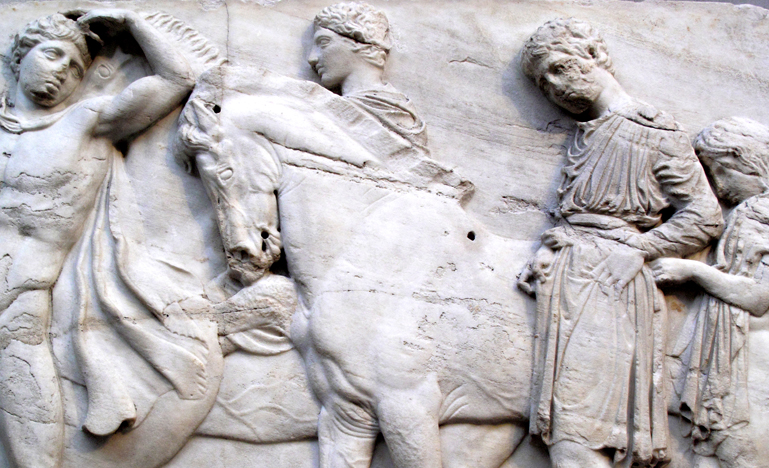Safeguarding national treasures
Are international conventions effective at protecting cultural property?

Looted artwork. Ancient cities reduced to rubble. Statues transplanted to museums a continent away. There are many ways cultural property can be stolen, damaged, or destroyed. But can international law help correct past injustices?
In recent years, stories about who rightfully owns cultural property have popped up with increasing frequency in news outlets around the world. Greece's longstanding dispute with the British Museum over the Elgin marbles, sculptures from the Parthenon that have been in London since 1801 is but one example. On one side of the debate, defenders of the British Museum argue that the sculptures' removal was officially sanctioned. However, evidence supporting this position is lacking, and as a result, others claim that the Greek government can legally demand the statutes' return.
Cultural property is especially vulnerable during times of war. It is well documented that the Nazis looted artwork and other cultural property during World War II. In the recent Syrian civil war, all six of the country's certified cultural heritage sites were damaged during the fighting.
There are international law standards that aim to protect cultural property, spelled out primarily in two main treaty regimes. The first is the 1954 Hague Convention for the Protection of Cultural Property in the Event of Armed Conflict and its protocols, which address the destruction of antiquities during conflict. The second is the 1970 UNESCO Convention on the Means of Prohibiting and Preventing the Illicit Import, Export and Transfer of Ownership of Cultural Property. It governs black-market trading. Among other objectives, these treaties require states to take measures to protect cultural property in advance of war, encourage states to respect export restrictions on cultural property, and create international crimes related to the mistreatment of cultural property.
But do the conventions work? The prevailing view, unfortunately, is that the treaty regime on the destruction and illegal trade in cultural property has mostly failed. Part of the problem is numbers: As of December 2018, 133 states had ratified the Hague Convention, but only 82 states had ratified the Convention's Second Protocol, which defines the mistreatment of cultural property as an international crime. The treaty's vague language is also problematic. For example, the Hague Convention requires only that state parties "respect" cultural property. While the Second Protocol frames the obligations in stronger terms, the relatively small number of states who have signed on suggests that others are reluctant to take on obligations with teeth.
The international legal regime governing cultural property has had more success in focusing on individuals. It is a war crime under Article 8 of the Rome Statute to intentionally direct attacks against buildings and historical monuments, including those dedicated to religion, education, and art. In 2016, the International Criminal Court relied on this provision when it convicted Ahmad Al Faqi Al Mahdi for attacking religious and historical buildings in Mali. He was sentenced to nine years in prison. While it is too soon to tell whether Al Mahdi's prosecution will serve as a deterrent, it is a positive indicator of the strength of this regime.
The regime’s effectiveness matters. Obviously, the historical and societal significance of cultural property is something to cherish. Beyond that, the regime also exemplifies one of the key objectives of international law: to create an equal playing field between states, regardless of size or economic power.
The issue of restitution and protection of cultural property continues to attract growing media attention and is likely not going away. What's on the line now is whether the international regime can be strengthened to carry out its purpose.


